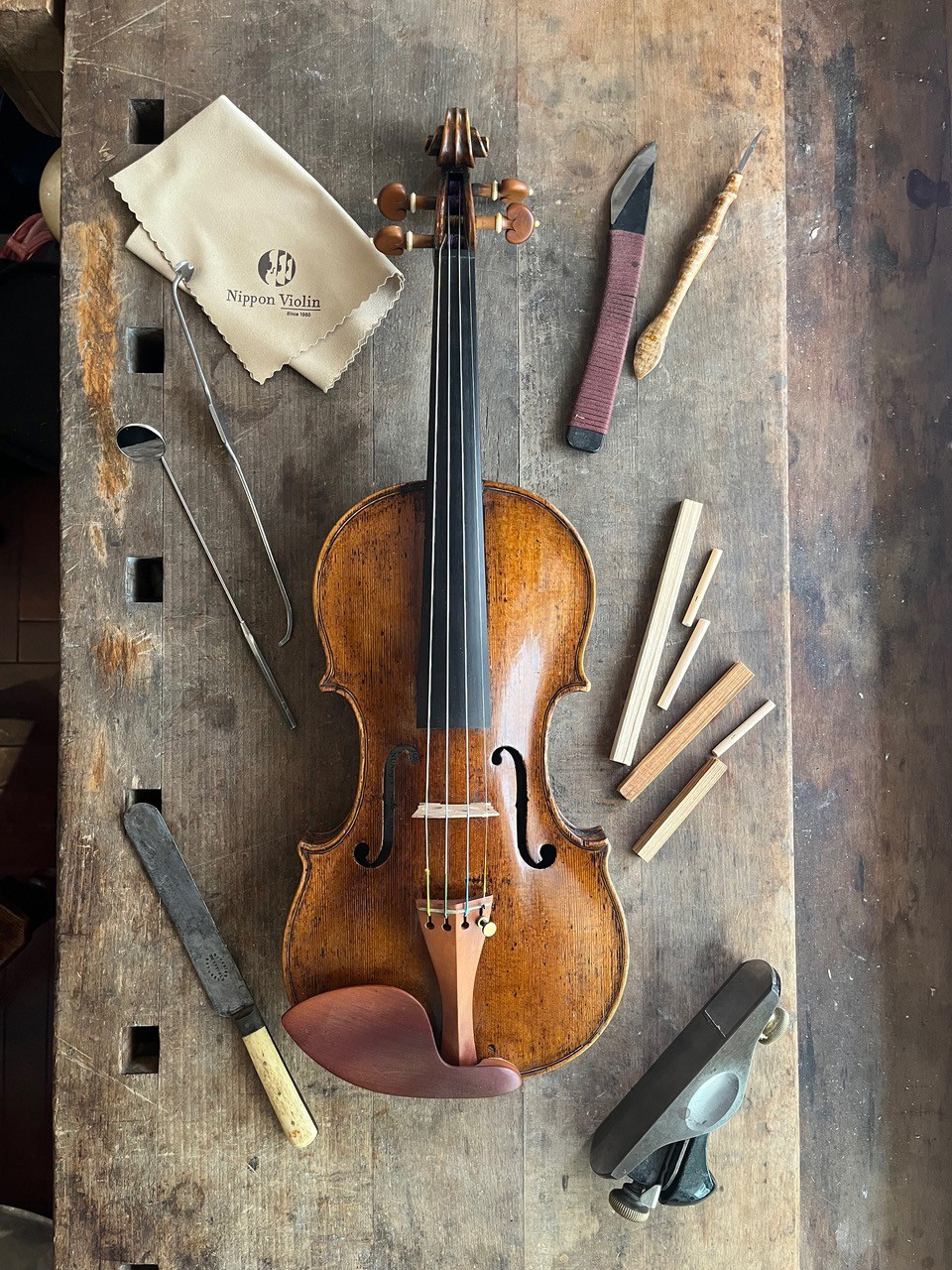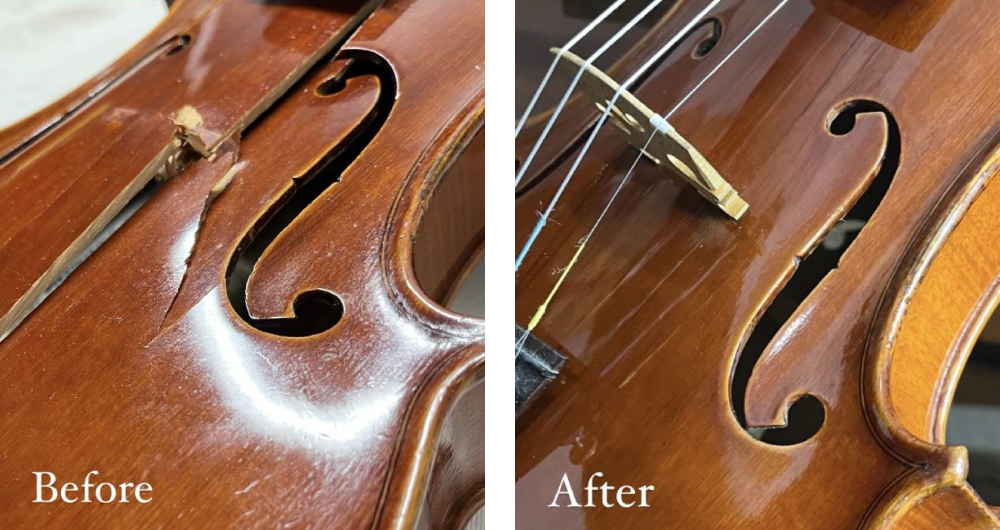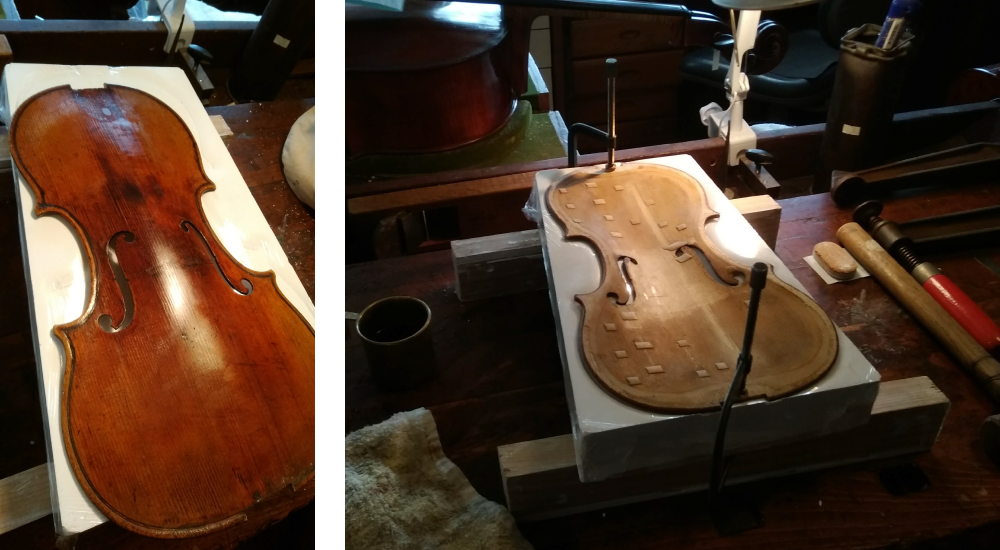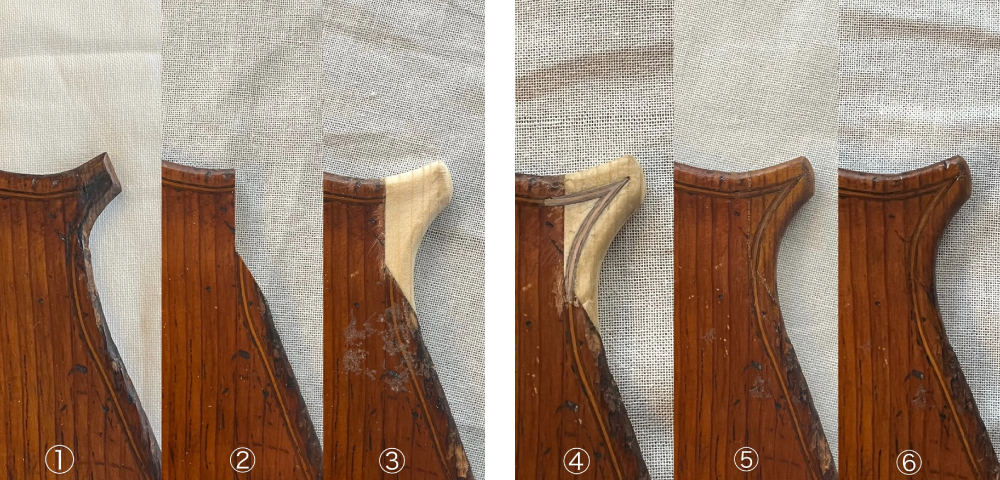Restoration

Indispensability we hold in restoration:
That is preservation of the originality of the instrument. Besides, we give such restorationthat a restorer of the following generation mayeasily understand and take over our restoration.
Nippon Violin seeks for various makers’ styles and characteristics precisely with knowledge from large archives and experiences of handling many excellent instruments, while continually taking in new techniques.
On the base of this policy, we will bring an instrument to a condition where its best potentialfor music performance would be expressed in a sound structure as a musical instrument with beautiful look.
We are also ready with full confidence for an offer of large scaled restoration project.
As is often the case, the difference between repair and restoration is not clearly understood.In musical instrument expertise, repair is to bring an instrument back from damage or unfavorable condition for practical use. On the other hand, restoration requires various techniques for overall balance after long-time-taking repair while keeping the maker’s original style.
Restoration techniques originated in the mid 19th century, long after the violin making history began.
It is said that many stringed instrument makers in and before the 19th century discarded damaged parts. Stradivari, the well-known maker, is known to have replaced the top plate instead of repairing it.
Today supply of old instruments is decreasing and prices of masterpieces are dramatically rising, while which restoration techniques are getting more important.
From restoration of old excellent instruments of and after the 17th century, we have learned various important things about sound and styles.
For example, we have recognized that symmetry was not the most important idol for the great Italian makers. By appreciating such great masterpieces, we are realizing our deep responsibility.
An excellent restorer recognizes he himself is not an expresser, and seeks to be a craftsman faithful to the philosophy of preservation and restoration. While understanding and appreciating various makers’ characteristics with knowledge of sound theories, a restorer should make efforts to make sounds of instruments as good as possible, for which continual relationship with players is also an important factor.
The first step to learn professional restoration expertise is making a high-quality instrument by himself.
A restorer has confidence and beliefs in his techniques as well as needs ethical judgement onhow to make his style compliant with another maker’s style. More important is a capability to be pleased to meet such necessity without egoism.
Noted should be that violin restoration is not to follow any solid principles. It should be done with an open mind as if an eternal student would do. A new technique originates directly from information exchanges between craftsmen and ambition to practice various ideas and approaches, and grows with high capability and creative images of each craftsman.
︎Crack repair
To repair a crack from an accident or an old crack, we open the crack or once-repaired crack, correct a warp or distortion, remove dirt, re-glue it and apply additional varnish.


Arch repair
We correct a warp or distortion of the arch from long-time tension of strings or from repair of the bass bar or patches, to the original shape. After making a plaster mold, correct it by applying heated sand bags to concave and convex parts at the same time. Bringing back the original state of the arch will greatly improve sound quality.



︎Edge repair
We remove an edge damaged in an accident or an old once-repaired edge, and add new wood to reproduce the original beautiful whole image.



